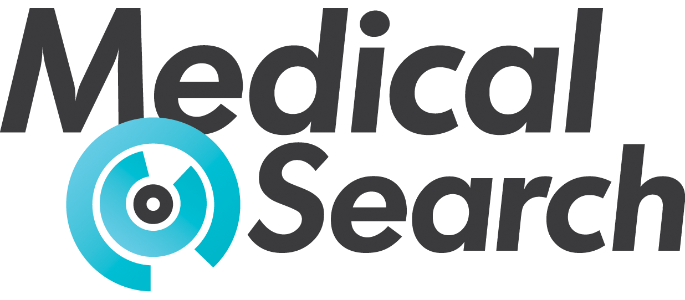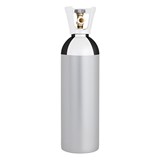Tired of admin bottlenecks? Learn how Aussie medical practices are using automation to cut paperwork, reduce burnout, and focus on patient care. Includes local case studies and funding options.
Key takeaways
- Admin burden is a leading cause of burnout for Australian healthcare professionals, with surveys showing over 70% of GPs feel paperwork impacts patient care.
- Automation tools, including AI-powered scheduling, digital intake forms, voice-to-text dictation, and integrated billing systems are reducing manual workflows and saving practices dozens of hours weekly.
- Immediate benefits include fewer appointment no-shows, faster Medicare claims processing through PRODA integration, improved compliance tracking, and error reduction.
- Sectors benefiting most include hospitals, pathology labs, GP clinics, aged care, and allied health/NDIS providers, where high-volume repetitive tasks are common.
- Key buying considerations encompass TGA registration for diagnostic tools, interoperability with My Health Record, strong data security, and quality local support and training.
- Implementation success depends on managing change carefully: involving staff early, starting with small process automation, allowing time for training, and maintaining software updates.
- Government incentives such as Digital Health Incentives, state funds and tax deductions help offset costs of digital transformation.
- Emerging trends to watch include robotic process automation (RPA), predictive analytics to forecast patient flow and no-shows, integrated patient apps, and real-time operational dashboards.
- Real-world case studies from Australian PHNs and clinics demonstrate admin time reductions of 25–30%, significant drops in claim rejections, and improved patient and staff satisfaction.
Introduction: A growing strain on Australian healthcare
From general practices in regional Queensland to physiotherapy clinics in suburban Sydney, healthcare providers across Australia are under increasing pressure. Rising patient numbers, chronic workforce shortages, and growing regulatory demands have left many professionals drowning in administration. According to the Australian Medical Association (AMA), GPs spend up to two hours per day on non-clinical admin tasks, while a 2024 survey by the RACGP found that 74% of practices felt paperwork was impacting patient care.
This administrative burden isn't just frustrating, it compromises outcomes. Time spent filling out forms or managing bookings is time not spent diagnosing or treating patients. That's where automation is stepping in.
Automation in healthcare isn't about replacing people. It's about supporting clinicians and admin teams to work smarter, not harder. From AI-driven triage to integrated claims processing, digital tools are helping practices save time, reduce costs, and improve care quality.
In this guide, we explore how automation is easing the admin load, what tools are gaining traction in Australia, and what you should consider when evaluating solutions for your practice.
Understanding where admin overload happens
Admin overload touches nearly every part of a practice, particularly in these areas:
- Patient intake and registration: Manual form filling, ID collection, and health history entry are time-consuming.
- Appointment booking and reminders: Missed appointments cost practices an estimated $1 billion annually (Productivity Commission, 2023).
- Billing and Medicare claims: Manual entry and resubmission delays add significant admin time.
- Clinical documentation: Writing, updating, and storing patient records eats into consulting hours.
- Compliance and reporting: TGA regulations, AHPRA obligations, and state-based rules require careful record keeping.
When done manually, these tasks are error-prone, labour-intensive, and ripe for streamlining.
Industries and sectors benefiting most from healthcare automation
Some healthcare sectors are seeing stronger ROI from automation, particularly where high-volume, repeatable tasks are the norm. Here’s where automation is gaining real traction in Australia:
Hospitals and day surgeries
- Automating theatre scheduling, pre-op checklists, and patient discharge instructions
- Streamlining supply chain management for pharmaceuticals and disposables
- Improving clinical documentation through digital dictation and voice-to-text tools
Pathology and diagnostic imaging
- Automating specimen tracking, report generation, and integration with GP software
- Using AI to triage scans or flag abnormalities for faster radiologist review
General practice (GP clinics)
- Automating appointment reminders, Medicare billing, recall systems, and patient intake
- Connecting with My Health Record systems more seamlessly
Aged care
- Reducing manual effort in care documentation, staff rostering, incident reporting, and medication tracking
- Ensuring compliance with Aged Care Quality Standards via automated audit trails
Allied health and NDIS providers
- Automating treatment notes, NDIS service logs, and claim submission
- Integrating practice management with accounting and scheduling platforms
Core automation tools making an impact
1. Digital intake and smart forms
Digital patient intake platforms let patients fill in their forms online before arrival, reducing the need for double-handling and scanning.
Benefits:
- Minimises data entry errors
- Reduces wait times at front desk
- Syncs directly with practice management systems (PMS)
2. Automated appointment scheduling
Smart scheduling tools use AI to optimise time slots, send SMS/email reminders, and reduce no-shows.
Benefits:
- Real-time calendar syncing
- Fewer missed appointments
- Streamlined rescheduling and cancellations
3. Voice recognition and medical dictation
Tools like Dragon Medical One allow clinicians to dictate notes directly into EHRs using natural language processing.
Benefits:
- Speeds up note taking
- Reduces end-of-day documentation backlog
- Allows clinicians to focus on patient conversation
4. Claims and invoicing automation
Integrated billing systems help automate Medicare and private insurance claims, reconciling errors and reducing delays.
Benefits:
- Faster reimbursement
- Easier tracking of unpaid claims
- Less manual double-checking
Example: A GP practice in Adelaide reduced rejected Medicare claims by 40% after switching to integrated automated billing.
5. Compliance and document management systems
Tools such as MedicalDirector Clinical or Coreplus automatically flag overdue compliance items and store documentation securely.
Benefits:
- Keeps you up to date with TGA/AHPRA obligations
- Reduces risk of fines
- Centralises audit-ready reporting
What to consider when choosing automation tools
Investing in automation shouldn't mean creating more headaches. Here are key considerations to guide your decision:
1. Interoperability
- Will it integrate with your existing PMS (e.g. Best Practice, MedicalDirector, Cliniko)?
- Can it share data with national systems like My Health Record?
2. Data security and privacy
- Is the provider ISO 27001 certified?
- Does it comply with the Australian Privacy Principles (APPs)?
- Are servers based in Australia or offshore?
3. TGA and industry compliance
- For any diagnostic or monitoring functions, is the tool TGA-registered?
- Is the software designed with AHPRA/Medicare reporting in mind?
4. Support and training
- Is onboarding included?
- Is local support available?
- Are there regular software updates?
5. Scalability
- Can the platform grow with your clinic?
- Is pricing user-based or flat?
Tip: Always request a demo and a local reference client before committing.
Common implementation pitfalls (and how to avoid them)
Even the best tools can fall flat if poorly implemented. Watch out for:
- Lack of staff buy-in: Involve admin and clinical staff early. Demonstrate time-saving benefits.
- Overcomplicating workflows: Start small. Automate one process at a time.
- Underestimating setup: Allow time for data migration, training, and integration testing.
- Neglecting updates: Automation tools evolve rapidly. Regular updates ensure security and functionality.
Grants and government programs supporting digital transformation
Adopting automation doesn’t have to be expensive. Several Australian programs offer funding and tax incentives to support digital upgrades in healthcare:
- Digital Health Incentives (Federal)
- Up to $12,500 per year for eligible general practices and Aboriginal Medical Services
- Supports adoption of My Health Record, ePrescribing, and secure messaging
- Available via Services Australia
- Smart Hospitals and Health Services Fund (QLD)
- Funding for public and not-for-profit health providers
- Supports investment in automation and digital clinical systems
- Aims to boost efficiency in regional and high-demand areas
- NSW Digital Restart Fund
- Grants for public and community health tech upgrades
- Includes support for automation, data systems, and digital care coordination
- NDIS Provider Toolkit
- Offers resources and low-cost digital tools
- Helps allied health and disability providers automate claims and manage compliance
- Small Business Technology Investment Boost (Federal)
- 20% bonus tax deduction on eligible digital purchases (including automation software)
- Available to businesses with turnover under $50 million, extended until mid-2025
Future trends shaping automation in healthcare
1. Robotic process automation (RPA)
RPA uses bots to handle repetitive tasks like appointment confirmation, claims reconciliation, or updating spreadsheets.
Example: Some private pathology labs in Victoria use RPA bots to process test results overnight, freeing up admin time during business hours.
2. Predictive analytics and AI
Machine learning is being used to anticipate no-shows, flag at-risk patients, and optimise resource allocation.
Example: The NSW Health Pathways project uses predictive modelling to manage hospital bed capacity based on historical trends.
3. Integrated patient apps
Apps that connect patients with their own health data, book appointments, and follow up care are increasing engagement and reducing phone traffic.
4. Real-time data dashboards
Dashboards aggregating operational metrics (wait times, claim rejections, patient flow) are being used for faster decision-making.
Real-world example: How a regional health network cut admin time by 25%
The Western NSW Primary Health Network partnered with a technology provider to roll out digital intake forms, automated referrals, and a centralised billing platform across 12 regional clinics. After six months:
- Admin hours dropped by 25%
- Claim rejection rates fell by 37%
- Patient satisfaction scores rose by 18%
Staff reported more time for patient follow-ups, improved morale, and faster onboarding of locum doctors.
Frequently asked questions
Can small clinics afford automation?
Yes, absolutely. Many automation tools are now designed with affordability in mind, especially for small practices, solo practitioners, and allied health providers. Subscription-based pricing models mean you can access platforms like HotDoc, Cliniko, or Medipass for under $50 per month. These tools often come with free trials or no-lock-in contracts, and the time savings, especially in admin-heavy tasks like scheduling or billing, often pay for themselves within weeks.
Is it safe to store patient data in the cloud?
Yes, provided the platform adheres to strict data security standards. Look for software providers that comply with the Australian Privacy Principles (APPs), have ISO 27001 certification, and store data on servers based in Australia. This ensures compliance with the Privacy Act 1988 and avoids the risks associated with offshore data handling.
Do I need to hire IT staff to manage these tools?
No. Most cloud-based healthcare automation platforms are built to be user-friendly and require little to no technical expertise. They typically include dedicated onboarding support, video tutorials, and local help desks. Many clinics manage these systems independently with minimal training, and setup can often be completed in a few hours.
Will automation affect my Medicare compliance?
It can actually improve it. Automation tools that handle Medicare billing or clinical records often include features that flag incomplete data, automate claim validation, and store documentation in audit-ready formats. Just ensure your platform is PRODA-integrated and aligns with Medicare and Services Australia requirements.
How long does it take to train staff?
Training times are generally short, most tools are designed to be intuitive and easy to adopt. For example, staff can typically be onboarded to platforms like Cliniko or HotDoc in less than a day. A staged rollout, starting with one admin process (such as automated appointment reminders), can make the transition even easier.
Final thoughts
Admin burnout isn’t a badge of honour. It’s a warning sign. For healthcare providers in Australia, embracing automation isn’t about chasing the latest trend, it’s a practical response to real, daily pressures. When implemented thoughtfully, automation reduces the noise, giving you and your team more time to do what matters: care for your patients.
As digital tools mature and local vendors continue to innovate, Australian clinics of all sizes can tap into automation to future-proof their operations. Whether you're a solo physio or managing a multi-site medical centre, small steps towards smarter systems can lead to big gains.



